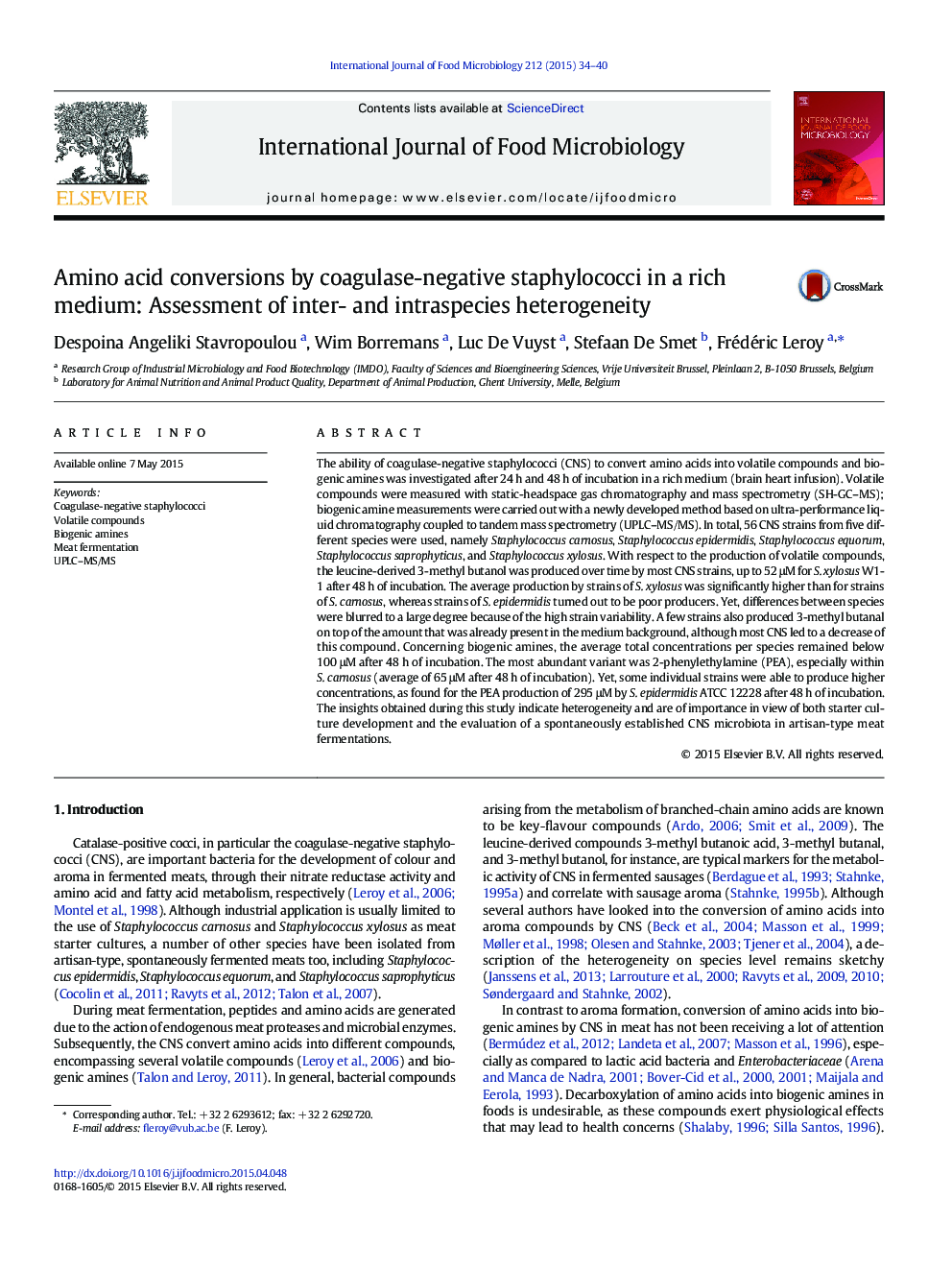| کد مقاله | کد نشریه | سال انتشار | مقاله انگلیسی | نسخه تمام متن |
|---|---|---|---|---|
| 4366445 | 1616571 | 2015 | 7 صفحه PDF | دانلود رایگان |
• Amino acid conversions by coagulase-negative staphylococci were strain-dependent.
• Both volatile compounds and biogenic amines were commonly found.
• Differences between species were blurred because of high strain variability.
• In most cases, 3-methyl butanol was formed, but levels strongly differed per strain.
• The most abundant biogenic amine was PEA, especially within S. carnosus.
The ability of coagulase-negative staphylococci (CNS) to convert amino acids into volatile compounds and biogenic amines was investigated after 24 h and 48 h of incubation in a rich medium (brain heart infusion). Volatile compounds were measured with static-headspace gas chromatography and mass spectrometry (SH-GC–MS); biogenic amine measurements were carried out with a newly developed method based on ultra-performance liquid chromatography coupled to tandem mass spectrometry (UPLC–MS/MS). In total, 56 CNS strains from five different species were used, namely Staphylococcus carnosus, Staphylococcus epidermidis, Staphylococcus equorum, Staphylococcus saprophyticus, and Staphylococcus xylosus. With respect to the production of volatile compounds, the leucine-derived 3-methyl butanol was produced over time by most CNS strains, up to 52 μM for S. xylosus W1-1 after 48 h of incubation. The average production by strains of S. xylosus was significantly higher than for strains of S. carnosus, whereas strains of S. epidermidis turned out to be poor producers. Yet, differences between species were blurred to a large degree because of the high strain variability. A few strains also produced 3-methyl butanal on top of the amount that was already present in the medium background, although most CNS led to a decrease of this compound. Concerning biogenic amines, the average total concentrations per species remained below 100 μM after 48 h of incubation. The most abundant variant was 2-phenylethylamine (PEA), especially within S. carnosus (average of 65 μM after 48 h of incubation). Yet, some individual strains were able to produce higher concentrations, as found for the PEA production of 295 μM by S. epidermidis ATCC 12228 after 48 h of incubation. The insights obtained during this study indicate heterogeneity and are of importance in view of both starter culture development and the evaluation of a spontaneously established CNS microbiota in artisan-type meat fermentations.
Journal: International Journal of Food Microbiology - Volume 212, 6 November 2015, Pages 34–40
